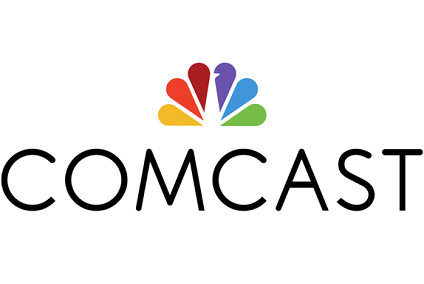In a move that has rattled quite a few cages, the Federal Communications Commission has proposed adopting new rules affecting cable and satellite distribution and consumption of content. What does that mean for the industry?

Back in February, the Commission released a Notice of Proposed Rulemaking (NPRM) regarding “Expanding Consumers’ Video Navigation Choices and Commercial Availability of Navigation Devices.” The NPRM addressed a number of issues that have been unresolved at the Commission, including the way that pay content is provided on cable and satellite set-top boxes (STBs), as well as how consumers pay for those services and boxes.
Twenty years ago, Congress directed the FCC to adopt regulations to assure the commercial availability of converter boxes to consumers of video programming and other services offered by multichannel video programming distributors (MVPDs). Reacting to consumer complaints of mandatory rental fees for the boxes, Congress decided that the FCC should step in and mandate the “open market” availability to consumers of converter boxes.
Because cable operators were loathe to cede control of the conditional access mechanism that protects cable content, they reluctantly developed the “CableCARD” initiative, which physically separated (but controlled) conditional access from the box by putting it into an operator-provided secure card module that could potentially be inserted into a third-party STB or TV.
The problem with CableCARD was that MVPDs had no incentive to have them succeed, and therefore dragged their feet on making them available. (While some cable operators did build and provide cards, availability wasnot widely advertised, and therefore, the cards did not achieve viable market penetration.) TV and competing STB manufacturers, without a date-certain for implementation, were reluctant to put the feature into products. The Commission dallied on the CableCARD requirement, failing to muster the effort to enforce the rule.
No Momentum, so Time for Regulation
But earlier this year, the Commission decided to revisit the mandate, by proposing a different way to approach the problem:
- require MVPDs to offer three flows of information using any published, transparent format that conforms to specifications set by open standards bodies,
- require each MVPD to support at least one content protection system to protect its multichannel video programming that is licensable on reasonable and non-discriminatory terms by an organization that is not affiliated with MVPDs,
- require each MVPD that offers its own application on unaffiliated devices without the need for MVPD-specific equipment to also offer the three information flows to unaffiliated applications without the need for MVPD-specific equipment,
- require MVPDs to provide the information flows only to unaffiliated navigation devices that honor copying and recording limits via licenses with content protection system vendors,
- leave licensing terms such as channel placement and treatment of advertising to marketplace forces, as they proposed for the CableCARD,
- seek comment on whether support for consumer-owned CableCARD devices has continued relevance.
 Not surprisingly, MVPDs like Comcast balked at the proposal, calling it “complicated,” “unjustified,” and “flawed,” and pointed to apps that already provide MVPD customers with “a growing array of retail device options for accessing MVPD video.” Consumer and privacy advocates were mixed in their reactions, with some saying that “increased consumer choice is beneficial,” while others said it “hurts consumers by raising costs,” is “illegal and unnecessary,” and repeats “technical mandates [that] have historically been abandoned by the agency after years of neglect.”
Not surprisingly, MVPDs like Comcast balked at the proposal, calling it “complicated,” “unjustified,” and “flawed,” and pointed to apps that already provide MVPD customers with “a growing array of retail device options for accessing MVPD video.” Consumer and privacy advocates were mixed in their reactions, with some saying that “increased consumer choice is beneficial,” while others said it “hurts consumers by raising costs,” is “illegal and unnecessary,” and repeats “technical mandates [that] have historically been abandoned by the agency after years of neglect.”
With mounting industry opposition, including intensive lobbying by the MVPDs, FCC Chairman Tom Wheeler was faced with the following potential negative outcomes: a thumbs-down vote by the Commission, or no vote before the next Presidential administration takes office, when historically the Chairman has stepped down. Apparently for these reasons, Wheeler announced earlier this month that the Commission has internally decided to overhaul the NPRM. In an op-ed piece published in the LA Times, Wheeler outlined the new proposal, and followed up with a fact sheet describing the particulars, saying that the Commission will vote on these “simplified rules” at its next open meeting on September 29, 2016.
The New Proposal
Briefly, the new rules propose to:
- require pay-TV providers to offer to consumers a free app, controlled by the pay-TV provider, to access all the programming they pay for on a variety of devices, including tablets, smartphones, gaming systems, streaming devices or smart TVs,
- allow users to download an app to devices they purchase or already own to access pay-TV service, so they are no longer forced to rent boxes from their pay-TV provider,
- provide cross-platform content searching and ease of access, and
- require Pay-TV providers to provide their apps to widely deployed platforms, such as Roku, Apple iOS, Windows and Android.
While apparently promoting consumer choice, the rules would place technical and business requirements on MVPDs, and could still engender industry opposition on the grounds of cost and complexity. But the real kicker is a proposed provision that would require “the development of a standard license governing the process for placing an app on a device or platform.” In addition, the FCC would “serve as a backstop to ensure that nothing in the standard license will harm the marketplace for competitive devices.”
 It’s this last line that has Hollywood and other content producers completely riled. Speaking at a Senate Oversight Hearing last week, Commissioner Michael O’Rielly apparently shares that concern, saying, “The proposed rule would ultimately set the Commission up as arbiter of a compulsory license, which the Copyright Office confirmed we have no authority to do under current law.” O’Rielly went on to add, “the proposed language is clear that the job of this licensing body is merely to develop recommendations for a consensus license, recommendations that the Commission may accept, micromanage, or retool at will.” (Wheeler and his press secretary Kim Hart have both said that “nothing in Chairman Wheeler’s proposal would create a compulsory license.”) Separately, O’Rielly was even more strident, saying the proposal “appears to exist within a fantasy world of unlimited Commission authority. The Commission is and must remain in the business of licensing spectrum and infrastructure, not content.”
It’s this last line that has Hollywood and other content producers completely riled. Speaking at a Senate Oversight Hearing last week, Commissioner Michael O’Rielly apparently shares that concern, saying, “The proposed rule would ultimately set the Commission up as arbiter of a compulsory license, which the Copyright Office confirmed we have no authority to do under current law.” O’Rielly went on to add, “the proposed language is clear that the job of this licensing body is merely to develop recommendations for a consensus license, recommendations that the Commission may accept, micromanage, or retool at will.” (Wheeler and his press secretary Kim Hart have both said that “nothing in Chairman Wheeler’s proposal would create a compulsory license.”) Separately, O’Rielly was even more strident, saying the proposal “appears to exist within a fantasy world of unlimited Commission authority. The Commission is and must remain in the business of licensing spectrum and infrastructure, not content.”
If these interpretations are correct, the rule would establish the FCC as the approving body concerning license agreements between certain content providers and the MVPDs, arguably an unprecedented and overreaching execution of its direction by Congress. While the Commission is an independent agency of the US government, its commissioners are appointed by the President, and is charged with carrying out specific portions of congressional legislation. As such, it essentially functions as a part of the executive branch, while at the same time has a certain amount of discretion in formulating rules that have the force of Federal Law.
The Future?
Currently, it’s unclear as to what the Commission will specifically vote on when it considers the “simplified rules” later this month — the text has not been released — and for that reason, lawmakers on both sides of the aisle are asking to see the actual text. One would hope that they will re-issue the NPRM with the new proposed language, and allow time for additional public comment. A more unsettling possibility is that they will release an actual Order (i.e., law) that presents the new rules as the outcome of the internal deliberations of the NPRM released in February.
FCC Commissioner Jessica Rosenworcel (D) has voiced concerns over the proposal, and appears to have the swing vote. The clock is ticking. — agc

